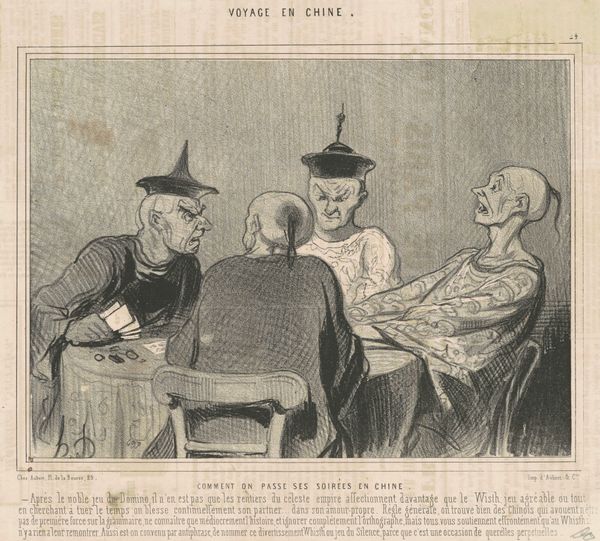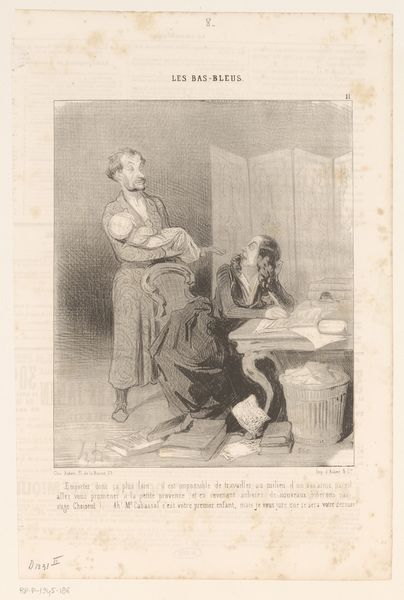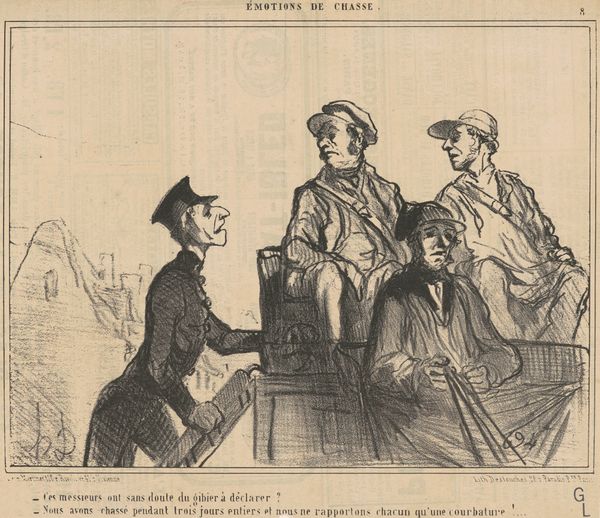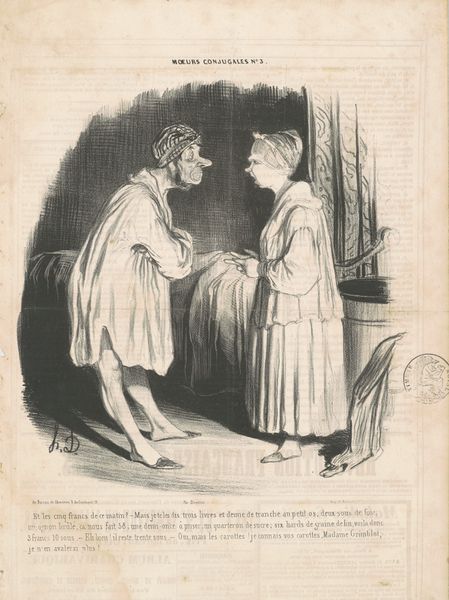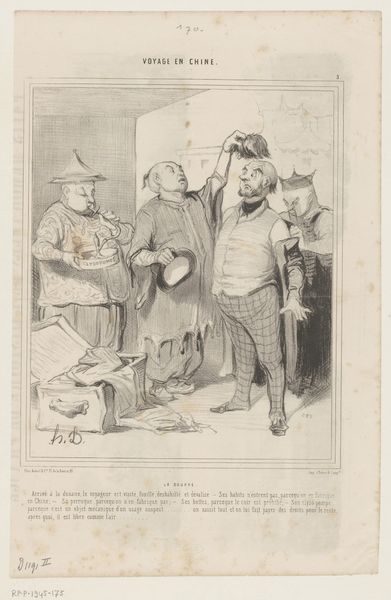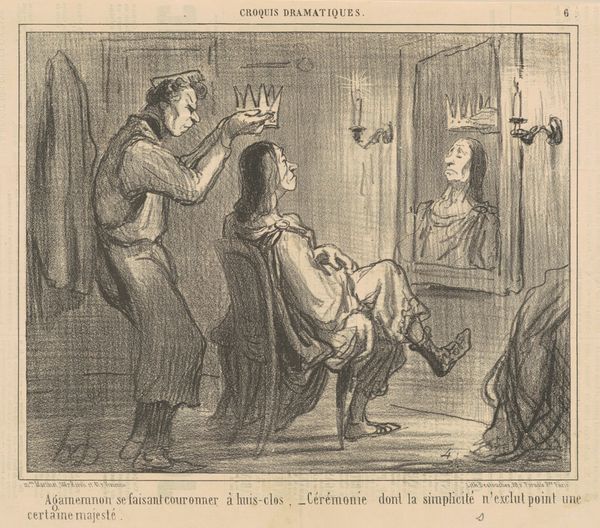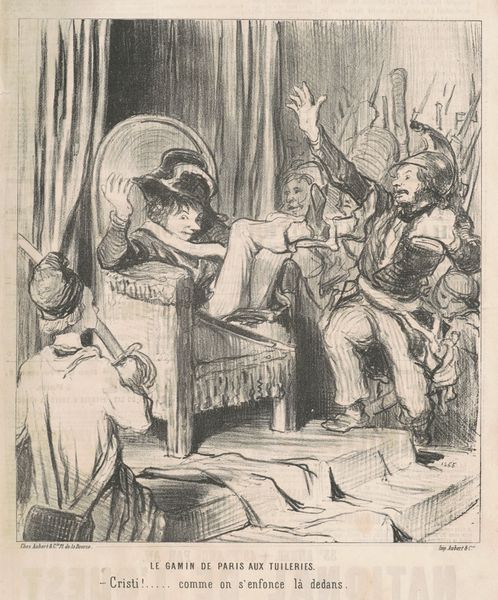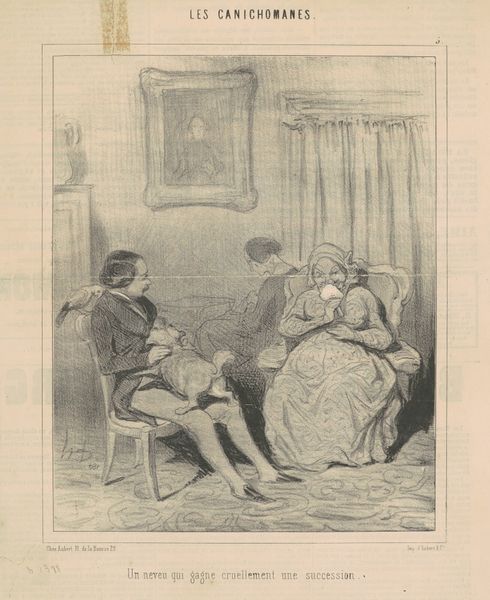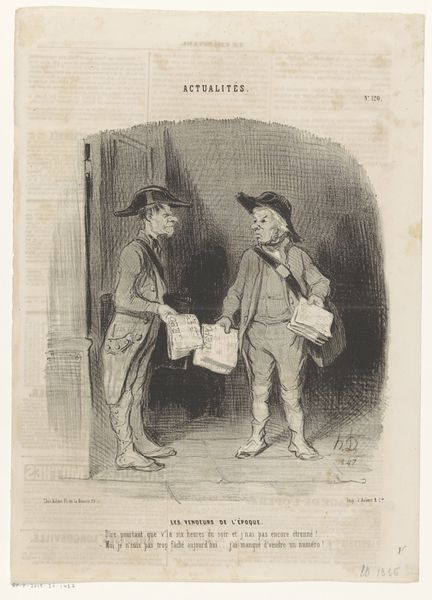
lithograph, print
#
lithograph
# print
#
caricature
#
genre-painting
Copyright: National Gallery of Art: CC0 1.0
Editor: This lithograph, called "Les mendians", is by Honoré Daumier and was created around the 19th century. The figures look… exaggerated, almost cruel, in their depiction. What is your take on it? Curator: I see Daumier's piece as a sharp critique of Orientalism and social inequality. Though seemingly depicting “beggars,” the image’s title card references their behavior “approved by the government,” positioning them ironically. How do you interpret the figures' attire? Do you see hints of power and commentary on their roles within society? Editor: Well, some are dressed in what look like traditional clothes, but they’re rendered in a way that feels mocking. Are you suggesting that Daumier is challenging the exoticized view of other cultures? Curator: Precisely! Daumier often used his art to highlight hypocrisy and societal injustice. By caricaturing these figures within a French satirical context, he invites us to question France's colonial gaze and treatment of marginalized populations globally. What’s particularly unsettling to you about the piece? Editor: I guess the implied consent—that the French government 'approves' the image. It feels very uncomfortable and speaks to the problematic power dynamics inherent in cultural representation. Curator: Absolutely. By acknowledging our own discomfort and challenging traditional narratives, we can gain a more nuanced and socially conscious perspective on Daumier's work, using it as a tool for dialogue about power, identity, and representation. Editor: That is an unexpectedly deep meaning for this cartoon! Thanks for illuminating Daumier's social critique for me. Curator: My pleasure! Let's continue questioning these representations and advocating for inclusive dialogues.
Comments
No comments
Be the first to comment and join the conversation on the ultimate creative platform.
